"When the Holy Spirit finds Mary in a soul, He flies to it."
-St. Louis de Montfort
“Never be afraid of loving the Blessed Virgin too much. You can never love her more than Jesus did.” – Saint Maximilian Kolbe
The Holy Rosary
The word Rosary means “Crown of Roses”. Our Lady has revealed to several people that each time they say a Hail Mary they are giving her a beautiful rose and that each complete Rosary makes her a crown of roses. The rose is the queen of flowers, and so the Rosary is the rose of all devotions and it is therefore the most important one. The Holy Rosary is considered a perfect prayer because within it lies the awesome story of our salvation. With the Rosary in fact we meditate the mysteries of joy, of sorrow, of glory and of light Jesus and Mary. It’s a simple prayer, humble so much like Mary. It’s a prayer we can all say together with Her, the Mother of God. With the Hail Mary we invite Her to pray for us. Our Lady always grants our request. She joins Her prayer to ours. Therefore it becomes ever more useful, because what Mary asks She always receives, Jesus can never say no to whatever His Mother asks for. In every apparition, the heavenly Mother has invited us to say the Rosary as a powerful weapon against evil, to bring us to true peace. With your prayer made together with Your heavenly Mother, you can obtain the great gift of bringing about a change of hearts and conversion. Each day, through prayer you can drive away from yourselves and from your homeland many dangers and many evils.
It can seem a repetitive prayer but instead it is like two sweethearts who many times say one another the words: “I love you”…
The Blessed Holy Father John Paul II on October 16th, 2002 with the Apostolic Letter Rosarium Virginis Mariae on the Most Holy Rosary has added 5 new mysteries of the Rosary: The Mysteries of the Light, The Luminous.
The whole Rosary is composed of twenty decades. Each decade is recited in honor of a mystery in Our Lord’s Life and that of His Blessed Mother. It is customary to recite five decades at a time while meditating on one set of mysteries. The decades may be separated, if the entire chaplet is completed on the same day. Each Mystery meditate “bead by bead” for every Hail Mary of the decade.
The Mysteries of the Rosary can be prayed following a schedule:
JOYFUL on Monday and Saturday
LUMINOUS on Thursday
SORROWFUL on Tuesday and Friday
GLORIOUS on Wednesday and Sunday
The Five First Saturdays
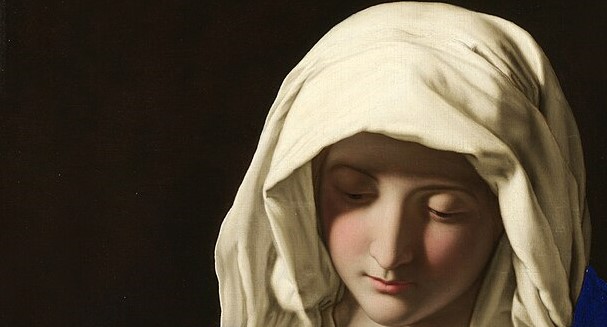
Mary’s Great Promise at Fatima
The Five First Saturdays are intended to honor and to make reparation to the Immaculate Heart of Mary for all the blasphemes and ingratitude of men.
This devotion and the wonderful promises connected with it were revealed by the Blessed Virgin at Fatima, a small village in Portugal. Our lady appeared to three children there in 1917, and one of the little girls, Lucy, tells us that Our Lady said:
I promise to help at the hour of death, with the graces needed for salvation, whoever on the First Saturday of five consecutive months shall:
1. Confess and Receive Communion.
2. Recite five decades of the Rosary (Joyful, Luminous, Sorrowful, or Glorious Mysteries)
3. Keep me company for fifteen minutes while meditating on the fifteen Mysteries of the Rosary, with the intention of making reparation to me.
The Litany of Loreto
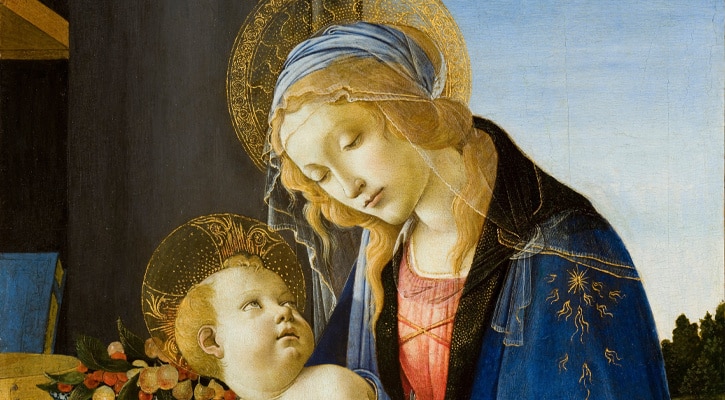
Our names, especially nicknames, express something of who we are and what we can do. The Litany of Loreto seems like a compendium of names of Mary. We can contemplate the work of God in Mary under each of these names which express different facets of her fullness of grace, and we can also beg for graces which correspond to these names. As a student and preacher-to-be, I like to pray to Mary Seat of Wisdom, and I think of how Mary lives her life completely in light of God as the highest cause of all things, which is true “wisdom.” We might be led to awe in what it means for her to be Mother of God when we contemplate how God has also placed her as Queen of Angels. Or again, when we pray to her as Mother of divine grace, I think of how her willing and worthy motherhood of God overflows spiritually to all of us, as Gerard Manley Hopkins wrote that she “mothers each new grace/ that now does reach our race.” In this sense, this “compendium” is a catechism.
The Angelus
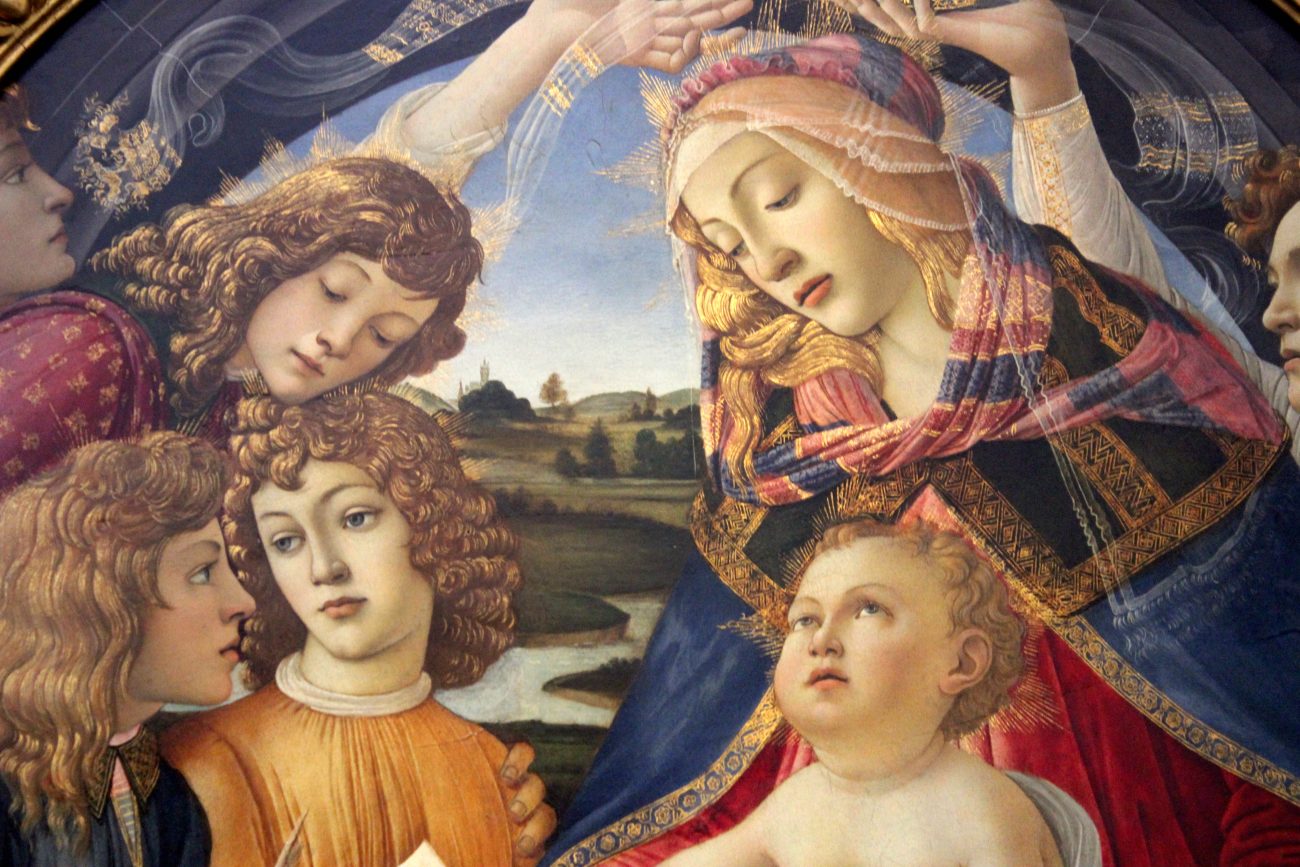
This prayer is named from the first word of the prayer, “The Angel of the Lord declared unto Mary.” It is a simple and brief set of prayers, easy to memorize, typically prayed at the beginning, middle and end of the day. It lays the mystery of the Annunciation before our eyes in the midst of the worries and occupations of our life. What graces can we seek here? The mystery is multi-faceted. Mary receives the Incarnate Son in her womb by her fiat. Looking upwards from the Incarnation, we contemplate the mystery of the Trinity, the Father who sends the Son, and the Virgin overshadowed by the Spirit. Looking sideways from the mystery of the Incarnation, we see the passion, death and resurrection for which Jesus was made man. It is also the mystery of God’s prevenient grace to us, which is both unmerited and unbidden. On the moral level, we can contemplate our own need to be attentive and obedient to the voice of God in the unexpected times and ways He speaks—which we live out when we punctuate our days with the Angelus.
The Scapular
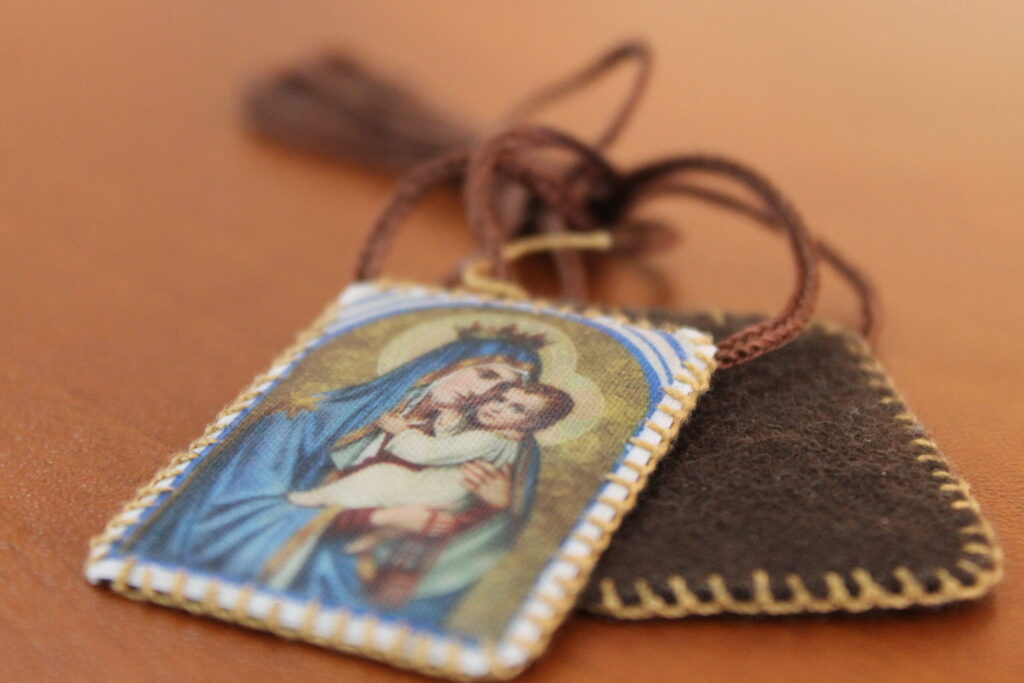
The scapular devotion, in its postage-stamp-sized variety, is a sort of symbolic sharing in the mission and prayers of a religious order. The most famous version is probably the Brown Scapular, which was given to the Carmelite friar St. Simon Stock. It has a rather hefty promise with it: preservation from the fires of hell. As the Church teaches, sacramentals exist to dispose us to receive the effects of the sacraments (Catechism of the Catholic Church 1667). This sacramental, then, does not entail making an end run on the need for the sacraments, especially the sacrament of penance. Mary promises us her intercession to be inserted in—and remain inserted in—this divinely revealed order, if we are faithful in devotion to her. The physical aspect of the scapular—it is worn—makes it a tangible reminder of Mary’s power to intercede for us.
Our Lady of Sorrows

This prayer is named from the first word of the prayer, “The Angel of the Lord declared unto Mary.” It is a simple and brief set of prayers, easy to memorize, typically prayed at the beginning, middle and end of the day. (I know some people who have set a “bell” to ring on their cellphones at the proper times for the Angelus.) It lays the mystery of the Annunciation before our eyes in the midst of the worries and occupations of our life. What graces can we seek here? The mystery is multi-faceted. Mary receives the Incarnate Son in her womb by her fiat. Looking upwards from the Incarnation, we contemplate the mystery of the Trinity, the Father who sends the Son, and the Virgin overshadowed by the Spirit. Looking sideways from the mystery of the Incarnation, we see the passion, death and resurrection for which Jesus was made man. It is also the mystery of God’s prevenient grace to us, which is both unmerited and unbidden. On the moral level, we can contemplate our own need to be attentive and obedient to the voice of God in the unexpected times and ways He speaks—which we live out when we punctuate our days with the Angelus.
Our Mother of Perpetual Help
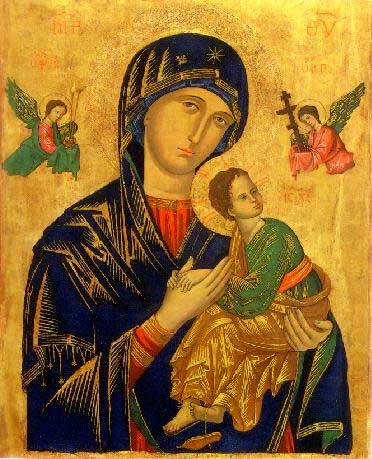
In his Apostolic Exhortation, Evangelii Gaudium (The Joy of the Gospel) Pope Francis states that when we find something that is good or beautiful or compelling—whether it is a movie, a work of art, a book, or a person—we don’t keep it to ourselves. Rather, we should be filled with a missionary fervor to share it. This is one of ways we can cultivate joy, bathing people as it were in those things that are suggestive of God, because whatever is good, whatever is beautiful, whatever is true, reflects God. This principle applies first and foremost to our experience of Jesus Christ risen from the dead. We want, with a reckless abandon, to give this supremely good news away. This energy, this compulsion— “woe to me if I do not evangelize”—is, for Pope Francis, the beating heart of the church.
Such is case also with the icon of Our Mother of Perpetual Help. In 1866, this beautiful icon was given to the Redemptorists by Pope Pius IX as of way of helping them in their mission of evangelizing the poor and most abandoned. Aware that this growing Congregation was about to begin a period of growth that would carry them throughout the world, the Pope commissioned them to make the icon known and proclaim, as had their founder, the glories of Mary, telling them: “Make her known throughout the world.” Filled with a missionary fervor to share it, the Redemptorists made the icon a missionary, a painted gospel, proclaiming through its color, symbols and figures, the abundance of God’s Redemption.
Hail Holy Queen - Salve Regina
Hail, holy Queen, mother of mercy, our life, our sweetness and our hope. To thee do we cry, poor banished children of Eve. To thee do we send up our sighs, mourning and weeping in this valley of tears. Turn then, most gracious advocate, thine eyes of mercy toward us, and after this our exile, show unto us the blessed fruit of thy womb, Jesus. O clement, O loving, O sweet Virgin Mary! Pray for us, O holy Mother of God, that we may be made worthy of the promises of Christ. Amen.
(This prayer is a constant favorite among the prayers to Virgin Mary. It has long been a part of the the Liturgy of the Hours, the Church’s official daily prayer.) –
Salve Regina
The Magnificat - Canticle of Mary
My soul magnifies the Lord, and my spirit rejoices in God my Savior, for he has regarded the low estate of his handmaiden. For behold, henceforth all generations will call me blessed; for he who is mighty has done great things for me, and holy is his name. And his mercy is on those who fear him from generation to generation. He has shown strength with his arm, he has scattered the proud in the imagination of their hearts, he has put down the mighty from their thrones, and exalted those of low degree; he has filled the hungry with good things, and the rich he has sent empty away. He has helped his servant Israel, in remembrance of his mercy, as he spoke to our fathers, to Abraham and to his posterity for ever.
See Luke 1:46-55
(Scripture contains this prayer of Mary’s joy and wonder at her role in the mystery of the Incarnation.
The Church recites this beautiful prayer daily at Evening Prayer (Vespers) in the Liturgy of the Hours.)
The Memorare
Remember, O most gracious Virgin Mary, that never was it known that any one who fled to thy protection, implored thy help or sought thy intercession, was left unaided. Inspired by this confidence, I fly unto thee, O Virgin of virgins my Mother; to thee do I come, before thee I stand, sinful and sorrowful; O Mother of the Word Incarnate, despise not my petitions, but in thy mercy hear and answer me, Amen.
(The Memorare is a beautiful prayer that expresses our confidence in the Blessed Virgin Mary. It is attributed to St. Bernard of Clairvaux.)
Miraculous Medal Prayer
O Mary, conceived without sin, pray for us who have recourse to thee, and for those who do not have recourse to thee, especially the enemies of the Church and those recommended to thee. Amen.
(One of the newer prayers to Virgin Mary. The first part appears on the Miraculous Medal, created by St. Catherine Laboure in response to her apparition of the Virgin Mary in 1830. This spurred a widespread devotion to prayers to Virgin Mary.
St. Maximilian Kolbe added the remaining part of this prayer. He was devoted to the Blessed Mother and her Miraculous Medal, and recommended frequent prayers to Virgin Mary for our own salvation and that of others.
St. Maximilian Kolbe was imprisoned by the Nazis in the Auschwitz death camp. He was killed on August 14, 1941, after offering his life so that another prisoner might be spared.)
Morning Prayer to Mother Mary
I offer myself to you.
And to show my devotion to you,
I offer you this day, my eyes,
my ears, my mouth, my heart,
my whole being without reserve.
Wherefore, good Mother, as I am your own,
Keep me, guard me as thy property and possession.
Act of Consecration to the Immaculate Heart of Mary
O most pure heart of Mary, full of goodness, show your love towards us. Let the flame of your heart, O Mary, descend on all people. We love you immensely. Impress on our hearts true love so that we may long for you. O Mary, gentle and humble of heart, remember us when we sin. You know that all people sin. Grant that through your most pure and motherly heart, we may be healed from every spiritual sickness. Grant that we may always experience the goodness of your motherly heart, and that through the flame of your heart we may be converted. Amen.
A Prayer to the Heart of Mary
O Heart of Mary, Mother of God, and our Mother, most amiable Heart,
object of the complacency of the most adorable Trinity,
and worthy of all the veneration and affection of Angels and men;
Heart most conformable to that of Jesus,
of which you are the most perfect likeness;
Heart full of goodness and compassion for our miseries,
vouchsafe to melt our frozen hearts,
and grant that they may be entirely turned
towards the Heart of our Divine Savior.
Infuse into them the love of your virtues;
inflame them with that sacred fire with which you continually burn.
Take under your protection the Holy Catholic Church;
defend it,and be always its consolation, its asylum
and its invincible fortress against every assault of its enemies.
Be our way to come to Jesus, and the channel through which
we receive all graces necessary for our salvation.
Be our help in our wants, our relief under afflictions,
our comfort in temptations, our refuge in persecutions,
and our support in all dangers;
but especially in our last conflict at the time of death,
when all the powers of hell will use their utmost endeavors
to seize our souls in that awful moment, in that terrible crisis,
on which depends our eternal lot.
At that time, O most pious Virgin,
make us experience the sweetness of your maternal Heart,
and the efficacy of your influence with Jesus,
your all-powerful Son, by opening unto us,
a secure refuge in the source itself of mercy, a secure refuge,
that we may enjoy the happiness of blessing Him in Heaven for all eternity.
Amen.
Prayer to Our Lady of Fatima
O Most Holy Virgin Mary, Queen of the most holy Rosary, you were pleased to appear to the children of Fatima and reveal a glorious message. We implore you, inspire in our hearts a fervent love for the recitation of the Rosary. By meditating on the mysteries of the redemption that are recalled therein may we obtain the graces and virtues that we ask, through the merits of Jesus Christ, our Lord and Redeemer.
Prayer for Healing to Our Lady of the Miraculous Medal
Mary Immaculate, you have given yourself to us as Our Lady of the Miraculous Medal. You have asked us to pray with confidence, and we will receive great graces. We know your compassion, because you saw your Son suffer and die for us. In your union with his suffering you became the mother of us all.
Mary, my mother teach me to understand my suffering as you do and to endure it in union with the suffering of Jesus. In your motherly love, calm my fears and increase my trust in God’s loving care.
According to God’s plan, obtain for me the healing I need. Intercede with your Son that I may have the strength I need to work for God’s glory and the salvation of the world.
Amen.
Mary, health of the sick, pray for us.
Prayer to Mother Mary for Family
O Mary, loving Mother of Jesus, and our Mother, pray to Jesus for our family, for all the families of the world, to guard the cradle of the newborn, the schools of the young, and their vocations.
Blessed Saint Joseph, holy guardian of Jesus and Mary, assist us by your prayers in all the necessities of life. Ask of Jesus that special grace which He granted to you, to watch over our home at the pillow of the sick and dying, so that with Mary and you, heaven may find our family unbroken in the Sacred Heart of Jesus.
Amen.
Prayer to Mother Mary for Protection
We fly to your protection, most holy Mother of God; please listen to our petitions and needs, and deliver us from all dangers, ever glorious and blessed Virgin Mary.
Mary, our model and mother, by your obedience and patience you have taught us how to be true children of God. Please help us by your powerful assistance to overcome all our weaknesses, and to fulfill perfectly our tasks in life.
By your compassionate aid may we ever stand in spirit with you beneath the cross of Christ so that we may also rejoice with you in your divine Son’s triumphant victory over sin and death.
In your maternal kindness help us to be faithful to prayers in the company of God’s Church as you were one with the Apostles in the upper room as you waited for the promised Spirit of Pentecost.
With your gracious assistance may we be near you in the glory of Christ’s kingdom come to sing with you and all the faithful the eternal praise of God. Amen.
Lead: O Mary, conceived without sin,
Response: Pray for us who have recourse to you.